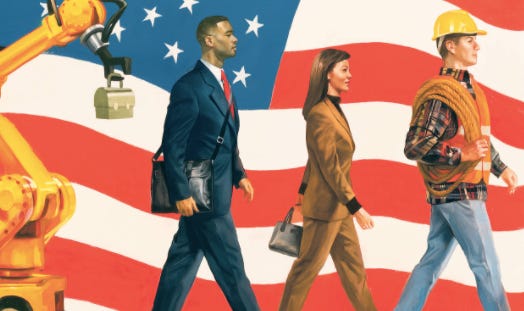The American dream is not a new idea, but our latter-day version of it comes from “The Epic of America,” a 1931 book by James Truslow Adams, a writer who started life as a banker.
In fact, Adams wanted to name his book “The American Dream,” but this was the Dirty Thirties of the Great Depression, and publishers figured no one would buy a book with such a hopeful title. (Not to worry. The author included the phrase “the American dream” 30 times in the text of the book, which was a best-seller. Evidently, readers liked a little hopefulness with their Depression.)
Boiled down, Adams’ said the American dream was:
a dream of a social order in which each man and each woman shall be able to attain to the fullest stature of which they are innately capable, and be recognized by others for what they are, regardless of the fortuitous circumstances of birth or position.
That is an attractive idea, that regardless of where you start, you can achieve success. Over time, Hollywood has helped crystalize the specifics of the dream with movies that include but are not limited to (and in no particular order):
PLEASANTVILLE
AN AMERICAN TAIL
SOCIAL NETWORK
THE PURSUIT OF HAPPYNESS
MR. SMITH GOES TO WASHINGTON
CITIZEN KANE
AND SO ON AND ON AND ON.
Perhaps you can add to the list of movies that tell us the American Dream includes a home that you own that is surrounded by a white picket fence, which you purchase and maintain with a job that pays a living wage that you got with knowledge you gained in school.
That has shifted.
Surveys show people believe the American dream is less and less attainable, and that the European dream is eclipsing the American one. These days, the United States has lower rates of income mobility than other developed countries. In fact, the U.S. scores lower than France, Germany, Sweden, Canada, Finland, Norway, and Denmark.
The pandemic laid bare inequities some of us could previously ignore. Ask a college student if they ever intend to own a home. Ask them how they would finish this sentence:
You can be_______________ if you just_________________.
Until we get through the pandemic, the American dream just might be staying alive and off a ventilator. But what of After Times (let there be After Times)? What can we realistically promise our young?






"Innately". does a lot of work there, in any case. As if each person were born full-grown from the head of America.Rather, we're given (or not given) nurture and development, and then given (or not given) opportunities.
As the grandchild of immigrants, I think the American Dream comes down to the expectation that each succeeding generation will do better materially than the previous one. So, for example, the first generation works long hours washing dishes, waiting tables, scrimps and saves, buys their own diner, keeps working long hours, and sends their kids to college. They become doctors and lawyers and engineers. But kids coming of age today in this era of vast wealth inequality? I think it's a whole different story for them.